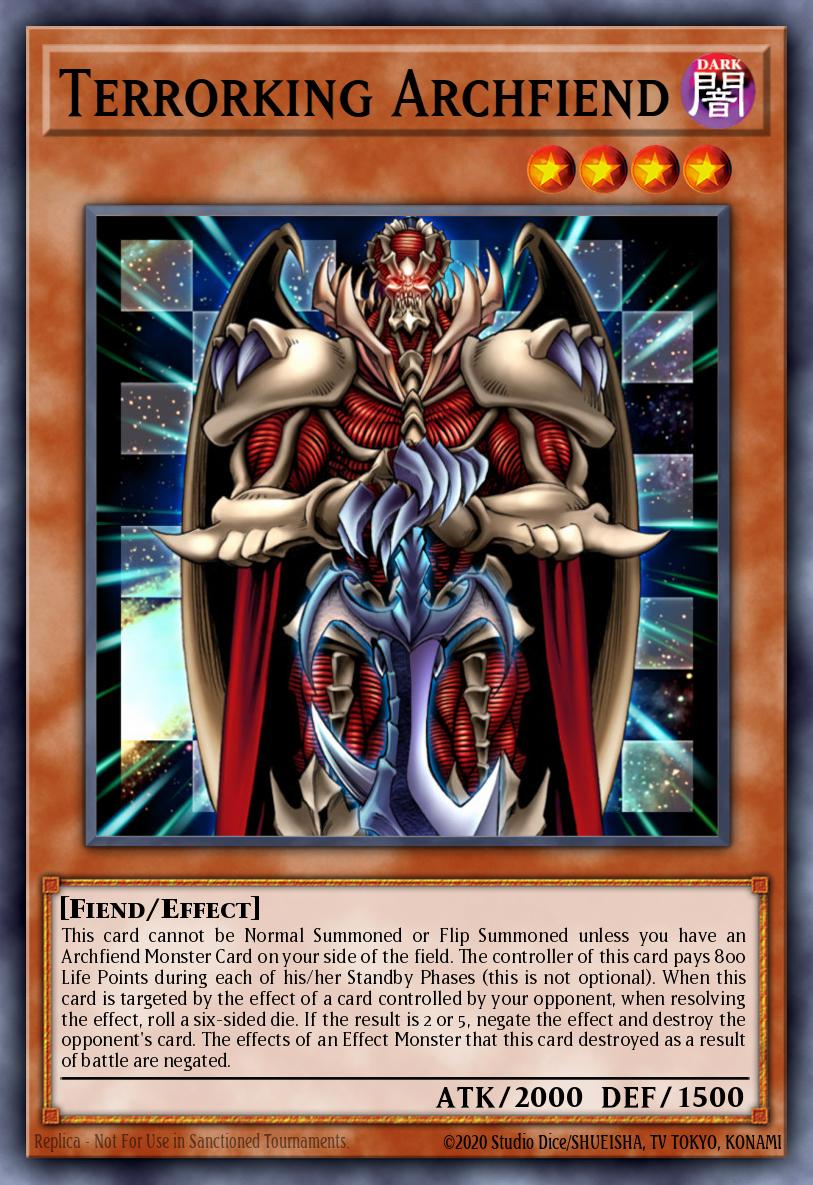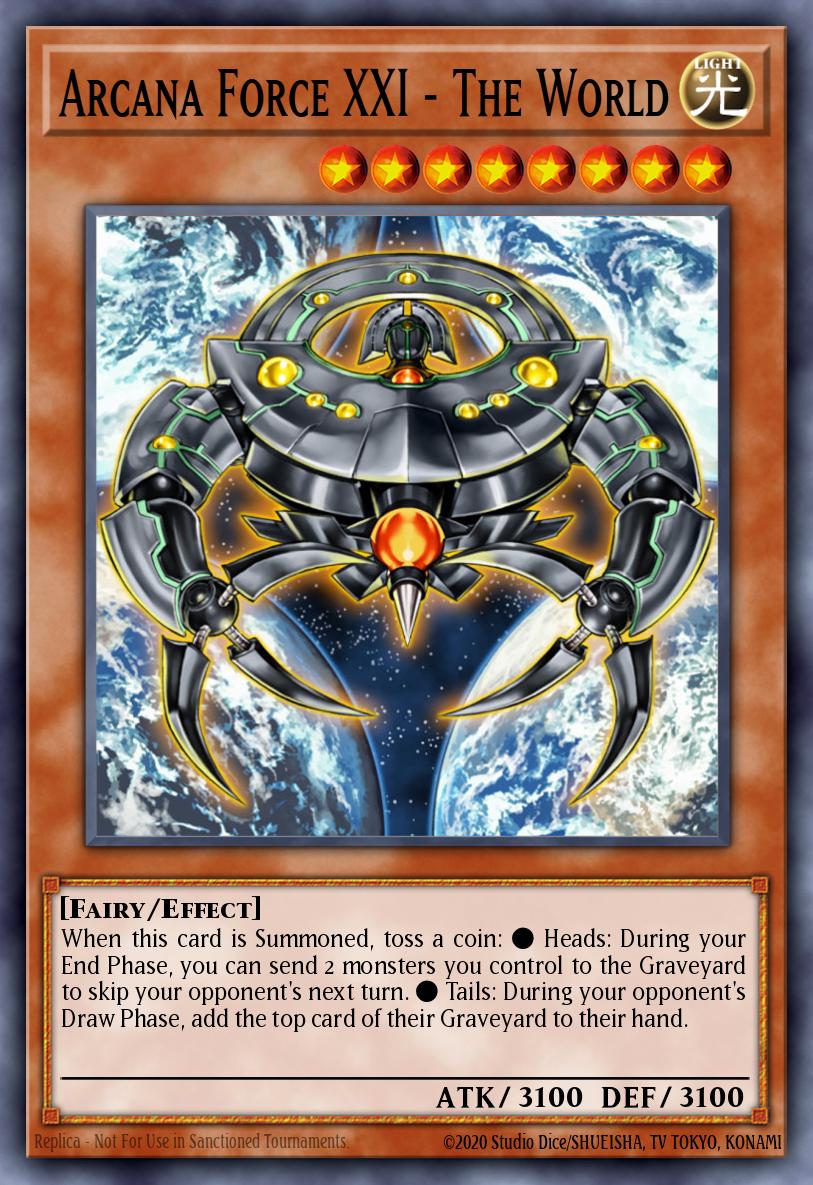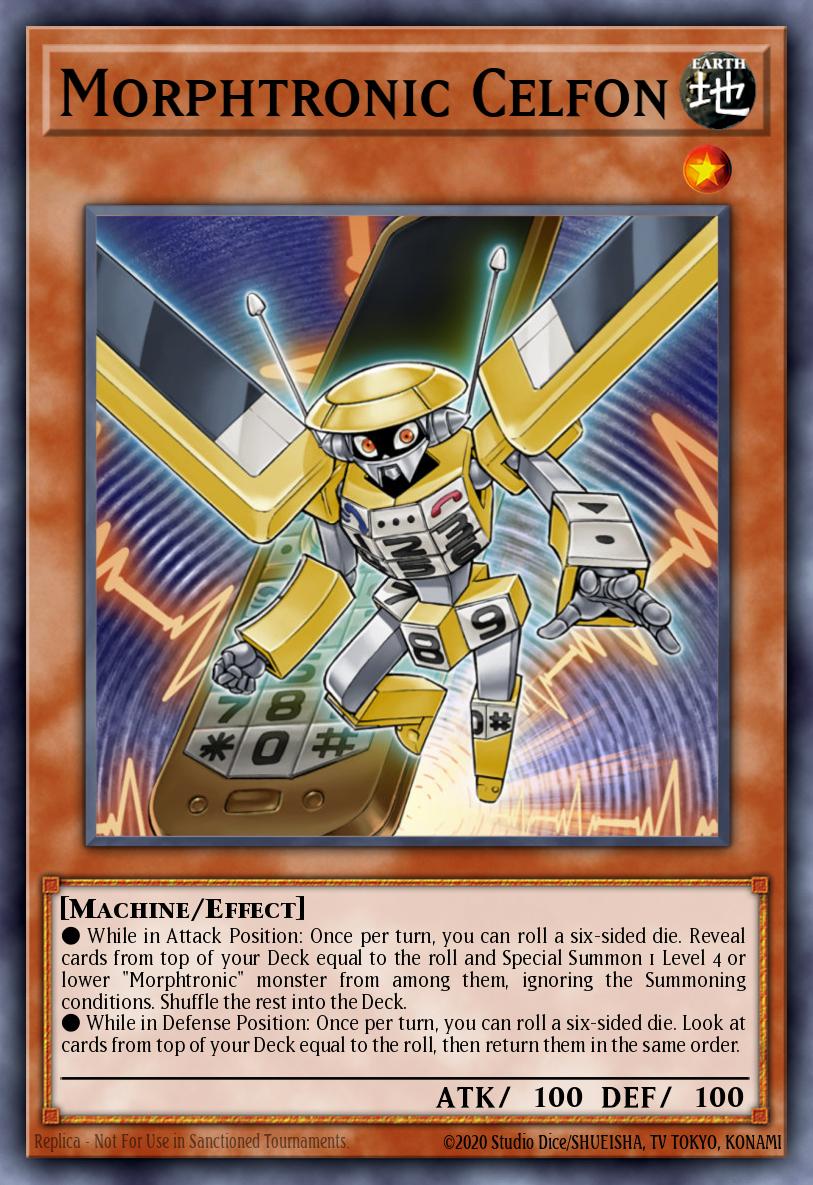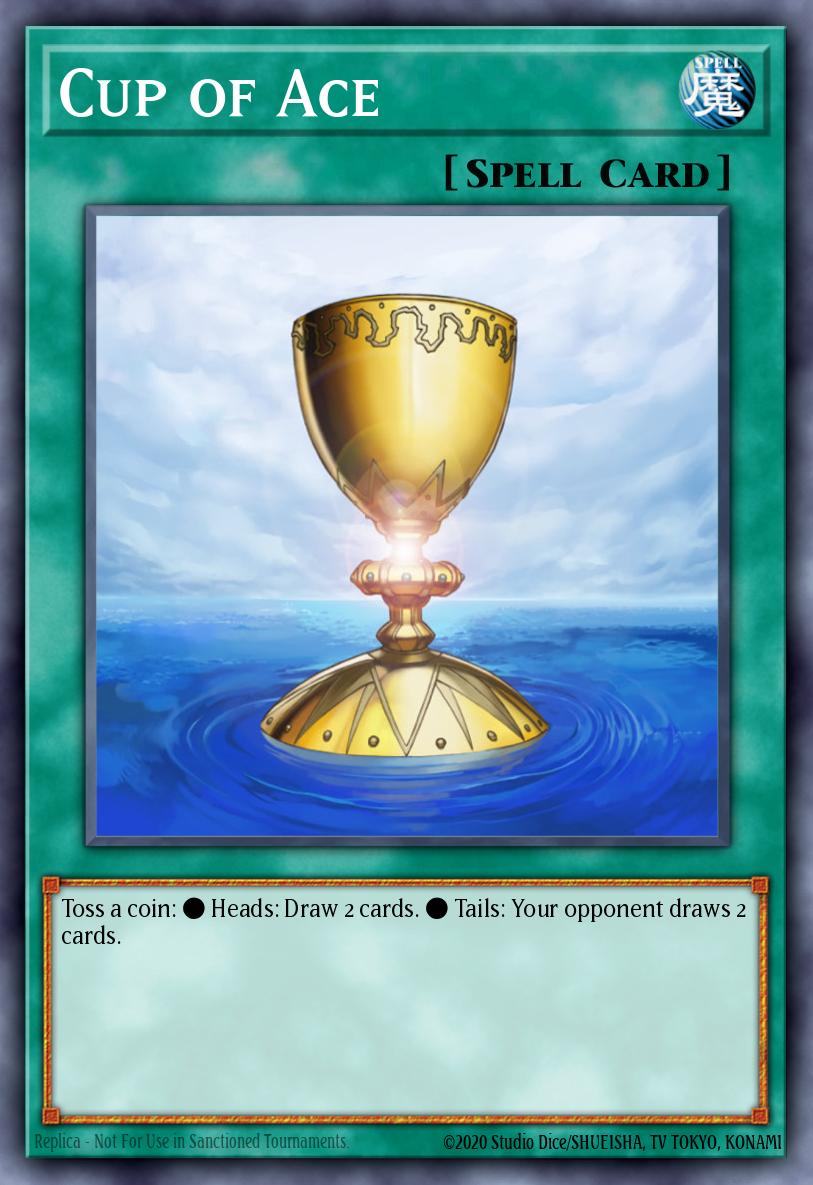Time Roulette Go! Luck has been a part of the game since the start. Deciding who goes first, the hand you draw, and every other card drawn after. It didn't take long for actual luck-based effects to appear in cards.
Archetypes Based on Luck
The archetypes that use coin tosses or die rolls as their main gimmick came during the GX era. Cards with these effects still appear occasionally as individual cards but are rarely related.
The Confusing Case of Archfiends

The Chess Archfiends, based on chess pieces all have three effects, two of them shared. An obligatory payment of Life Points during the Standby Phase and targeting "protection" in the form of a die roll. The third effect if present is specific to each one. Their first field spell Pandemonium already makes it look like they regretted giving cards like Vilepawn Archfiend an upkeep cost. And yet, their link monster, Masterking Archfiend prefers that you play their newer field spell Archfiend Palabyrinth instead. After the first series of Chess Archfiends the deck shifted direction, keeping the life payments but locking the die in the dungeon. Having luck protecting your cards stopped being the focus. Future cards preferred to be destroyed instead. The thematic relation of dice applied to chess is unclear, but the next archetype's coin theme is crystal clear.
Table Tossing Arcana Force
Sartorius deck from GX. It is a tarot-based archetype that tosses a coin when a monster is summoned to decide whether to apply the good or the bad effect. In the show getting the desired result was easy. But in real life without destiny controlling powers, it's a bit harder. Their monsters' stats are equal to their tarot number +1000 unless you're Arcana Force 0 - The Fool. At least The Fool served as a secondary Spirit Reaper back in the day, as it isn't destroyed by battle regardless of its coin toss and could just be set.

The two bosses of the deck, the EX rulers, have the particularity of not having a bad effect. They share the summoning condition of tributing three monsters to special summoned themselves, but are both just big beaters. However, the real boss of the deck used later on is Arcana Force XXI - The World. The objective was to summon The World with its head effect and two other monsters and keep skipping your opponent's turn, essentially stopping time for your opponent. Valhalla, Hall of the Fallen took care of summoning The World and Light Barrier of choosing the correct effect.
Light Barrier is interesting in that it allows you to bypass the luck factor on your monsters... you just have to get Light Barrier's coin toss right. As of late, their greatest achievement is working well with Gizmek Uka, at least if your opponent plays Light monsters. Thank God for Linkross combos, right?
The Good Luck Cards
In Archetype
Moving away from the "Arc-" Archetypes, we reach a few cards that are integral in their decks while not having the deck be based around luck.
While not an archetype, Time Wizard and Magus have become the stars of their own deck. Probably one of the best-known coin flip effects in the game due to its anime presence. One clears the whole board regardless of the result and the other only the losers' board. The downside is, Dark Hole is at three and does pretty much the same thing 100% of the time instead of 50%.

Morphtronic Celfon and Smartfon are the main swarming mechanism for the Morphtronic deck. Here the difference between rolling a three and a six is negligible if you find at least one Morphtronic in both. This form of die roll is so irrelevant that it may as well be removed. Salamangreat Foxy and Marincess Blue Tang take an average roll, three, and simply excavate that many cards.
Barrel Dragon, Desperado, and all the related barrel dragons are an archetype in all but name. Their effects are about tossing coins and getting heads to destroy cards. Not even Bandit Keith's sleight of hand was able to give the earlier dragons a win. The card making the deck work is their recent field spell, Heavy Metal Raiders. Desperado, their best monster is inferior in many ways by Gizmek Orochi even considering the field.
Out of Archetype
The majority of cards involving luck support the mechanic itself or use it to gamble getting a strong effect. Here are some of the more standout ones.
- Fiend Comedian - Situationally good in some cases. Always good in decks like Lightsworn or those that want to send half their deck to the graveyard.
- Fairy Box - A different Ordeal of a Traveler used in earlier stall decks.
- The Paths of Destiny - Always coupled with Bad Reaction to Simochi and played exclusively in burn decks.
- Dark Sanctuary - Destiny Board support but also protects and burns half the time you are attacked.
- Cup of Ace - Desperate draw card for some and a staple in decks that aim to deck the opponent out.
- Snipe Hunter - Perhaps the only good die roll monster. A 2/3 chance of destroying your target, and not once per turn. If you had the discards to spare, it cleared boards back in the day.
- Dice Jar - One of the biggest gambles out there, next to well, Gamble, but pulling off a six win all but closes the game.
- Sixth Sense - Free mills or 5-6 draws. Banned for good reason.
- Dice Try Again - Entering the realm of cards that support the mechanic, this is your searcher for dice cards...1/3 of the time. At least it's reusable.
- Arcana Reading - Similar to the previous one, but for coins. Unless you're playing Arcana Force, this is your 50% chance to search a coin toss card.
- Lucky Chance - A form of recovering advantage lost through failed gambles. It's slow and very specifcic, but if you throw enough coins, some will land.
- Second Coin Toss - A godsend for coin tossers, once per turn increasing your chances from 50% to 75% on single coin tosses. If only it wasn't once per turn.

Balancing the Scales
There are two types of luck-based effects cards can be divided into. Cards with negative effects and cards with less good effects. Graceful Dice is an example of the later, and Tour of Doom of the former. Of course, some of the negative effects aren't negative in all decks. As mentioned before, Fiend Comedian has no negative effect if you want to send cards to the grave.
The problem is twofold. Firstly, even if we only consider the positive effect, most luck-based cards are not that good. Of those with a good positive effect, the negative one usually outclasses it. That's not a bad thing, the negative should outweigh the positive, that's what makes it a gamble, but losing it shouldn't cripple you irreparably. Secondly, and as with other strategies that rely on luck, nothing is guaranteed. Consistency is a key factor in Yu-Gi-Oh! effects that don't always do the same thing can't be accounted for in the same way when deck building and playing.
A likely workaround could limit the effects to certain card types or archetypes, where the downsides still somewhat benefit the overall strategy. This helps keep the unpredictability that makes it appealing, while remaining fun to play and adapt. There are cards that allow you to apply only one of its effects, with no chance involved.
None of this is to say that you shouldn't run Dice Jar turbo, just that you'll probably win more with Mystic Mine Burn.




